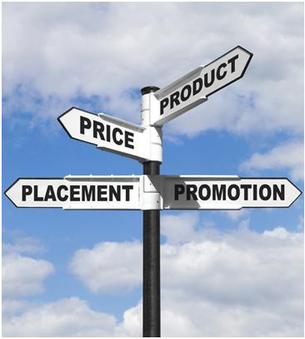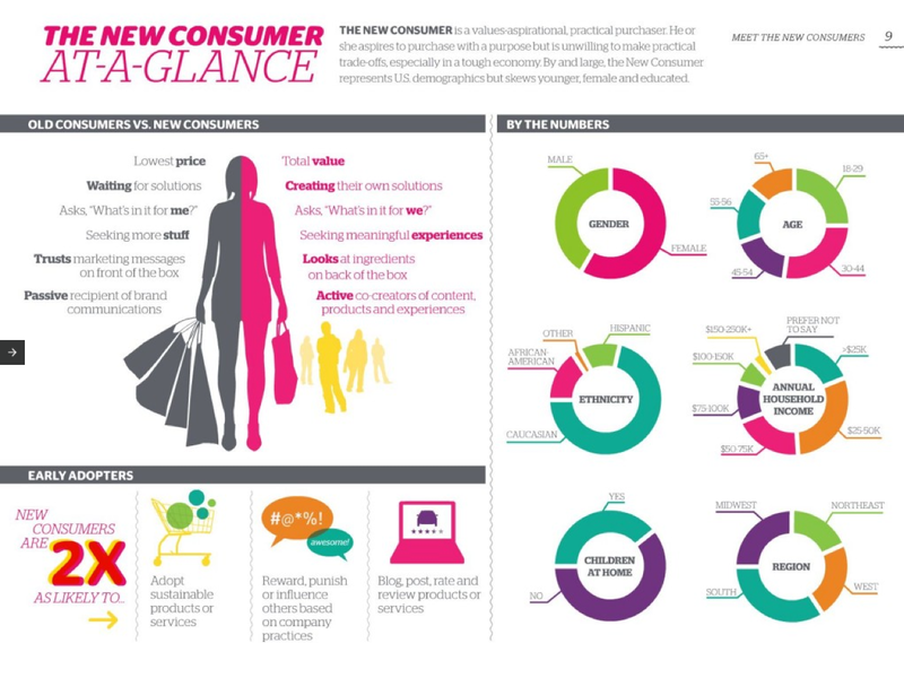Why retailers must excel in the 4 C's instead of the 4 P's

Click The Image To Read The Original Article
Marketing 101 classes are being rewritten by consumers
Anyone who has taken a marketing class or attended a business seminar can probably recite the 4 Ps of marketing: Product, Price, Promotion and Place. Prior to the internet, consumers literally had to go shops to purchase anything. The best merchants in this product centric world thrived if they mastered the 4 Ps. Today, the 4Ps are far less relevant in a consumer centric world, where you can shop any place, anytime from anywhere. Traditional retailers clinging to the 4 Ps are in trouble. To thrive in today's marketplace requires at least investing in the 4 Cs.
Origins of retail and the 4 Ps of Marketing
The term "retail" is derived from the French word "retaillier", meaning to divide up and sell in small quantities across multiple locations. Consumers have always been required to go somewhere to get things, including essentials like food. Before organized retail stores, consumers went to markets. The merchants who thrived were the best at merchandising and promoting their products, resorting to price to close sales that day if needed.
Prior to ecommerce and the rise of e-tailers like Amazon, we as consumers did not, or were not allowed to buy wholesale direct from manufacturers. Big box retailers thrived in a product centric world by building bigger stores (one stop shopping PLACE) in the best PLACES to shop. They advertised and PROMOTED that they had the latest gadgets and the largest assortments of PRODUCTS. They also PROMOTED that they had low PRICES and you could get the best deal from them today through their PROMOTION bundles and offers.
Life was good in a product centric world. The principles of the 4 Ps were well understood. The big box retail stores came into being and thrived on executing the 4 Ps.
Anyone who has taken a marketing class or attended a business seminar can probably recite the 4 Ps of marketing: Product, Price, Promotion and Place. Prior to the internet, consumers literally had to go shops to purchase anything. The best merchants in this product centric world thrived if they mastered the 4 Ps. Today, the 4Ps are far less relevant in a consumer centric world, where you can shop any place, anytime from anywhere. Traditional retailers clinging to the 4 Ps are in trouble. To thrive in today's marketplace requires at least investing in the 4 Cs.
Origins of retail and the 4 Ps of Marketing
The term "retail" is derived from the French word "retaillier", meaning to divide up and sell in small quantities across multiple locations. Consumers have always been required to go somewhere to get things, including essentials like food. Before organized retail stores, consumers went to markets. The merchants who thrived were the best at merchandising and promoting their products, resorting to price to close sales that day if needed.
Prior to ecommerce and the rise of e-tailers like Amazon, we as consumers did not, or were not allowed to buy wholesale direct from manufacturers. Big box retailers thrived in a product centric world by building bigger stores (one stop shopping PLACE) in the best PLACES to shop. They advertised and PROMOTED that they had the latest gadgets and the largest assortments of PRODUCTS. They also PROMOTED that they had low PRICES and you could get the best deal from them today through their PROMOTION bundles and offers.
Life was good in a product centric world. The principles of the 4 Ps were well understood. The big box retail stores came into being and thrived on executing the 4 Ps.
Why The 4 P's of Marketing Are No Longer Working For Bricks & Mortar

Click The Image To Read The Original Article
There are two major disruptive forces shaping the face of retail today. The first is technology of being able to connect anytime anywhere. Technology has enabled the second and more significant force - consumers changing both their shopping behavior and what they value. In a consumer centric world the 4 Ps of marketing are less relevant and far less effective:
Product: Consumers can purchase products anywhere, including direct from the manufacturer. Product information is an open book … you can read reviews online at Amazon, and the most trusted source of product information is family and friends.
Pricing: Before EDLP (Everyday Low Price) retailers use to manipulate pricing to drive traffic and sales. The majority of consumers are researching online, and willing to purchase online. Lowest price is no longer as competitive tool, even for Walmart. Competitive pricing is a prerequisite to be considered, but not sufficient to close a sale.
Promotions: US retailers, like JC Penney's, established their brand through weekly promotions. In-store promotions have lost their impact … and they may not even be considered at all if the shopper doesn't interact with the retailer online. If promotions have a significant impact at all, they are most effectively deployed in an omni-channel strategy.
Place: This is where bricks and mortar stores can be most vulnerable. They are locked into leases and invested in place. Consumers are increasingly "place agnostic". They want choice of where and how they purchase. And, the "long-tail" of online assortments offers far more variety of what can be assorted in store.
Product: Consumers can purchase products anywhere, including direct from the manufacturer. Product information is an open book … you can read reviews online at Amazon, and the most trusted source of product information is family and friends.
Pricing: Before EDLP (Everyday Low Price) retailers use to manipulate pricing to drive traffic and sales. The majority of consumers are researching online, and willing to purchase online. Lowest price is no longer as competitive tool, even for Walmart. Competitive pricing is a prerequisite to be considered, but not sufficient to close a sale.
Promotions: US retailers, like JC Penney's, established their brand through weekly promotions. In-store promotions have lost their impact … and they may not even be considered at all if the shopper doesn't interact with the retailer online. If promotions have a significant impact at all, they are most effectively deployed in an omni-channel strategy.
Place: This is where bricks and mortar stores can be most vulnerable. They are locked into leases and invested in place. Consumers are increasingly "place agnostic". They want choice of where and how they purchase. And, the "long-tail" of online assortments offers far more variety of what can be assorted in store.
Rise of the 4 Cs of Consumer Centric Marketing
The 4 Ps of marketing and retailing were relevant when product was king. Today, the consumer is Queen and makes the rules of how, when, and where she shops. Are bricks and mortar retailers doomed? Yes, if they fall back only on their heritage of the 4 Ps. The successful retailers in this consumer centric world are quickly finding that this has become an environment where omni-channel is the new normal. Big box retailers will be especially challenged. They can't dominate on their locations or size of their store assortment. In fact, large store assortments can be a disadvantage in terms of carrying costs. In this consumer centric world, virtual shelf will be as important as physical shelf.
Whether it in store or online, consumers are voting for the 4 Cs:
Connections: The key here is plural. Consumers expect to connect with brands anytime, anywhere … especially on their smartphones. In an omni-channel world, retailers have to expect to connect very early in the consumer journey, when they first start researching online. And, they expect to continue that connection in store.
Choice: Today's consumers are not limited by what they can find in a store, or even the goods they find in their own country. They expect the ability to shop a wide array of products. Consequently, store based retailers must connect their virtual shelf to the store shelf. In fact, store based purchases may include as many virtual shelf items as items chosen from the shelf. This will indeed require not only rethinking assortments, but technology to enable "seamless" shopping.
Convenience: This "C" is closely related to Choice. Consumers are increasingly looking for convenience of how they purchase, but also where they choose to receive their goods. Today's time starved consumers are expecting the convenience of shopping online or in store, but also the convenience of ship to home, pickup in store, or even pickup at a locker in another convenience location.
Conversation: If there's one thing about today's consumer … they are social! Consumers are more than likely to begin their journey on social media looking for conversation, and most importantly look for recommendations. But, it goes beyond search. Consumers are looking for conversation and connection with brands they value. Biggest miss of today's retail stores is continuing the conversation AFTER the initial sale. Again, technology becomes a key. CRM will not only be the lifeline of continuing the conversation, but also the connecting the consumer value experience to creating relationships based upon lifetime value.
The bottom line is always … Results Count!
In times of disruptive change, there is always a lot of conversation, and opinions. The great opportunity for retailers is that this does NOT have to be either/or. Investments in the 4 Ps can be measured. Likewise, rising value of the 4 Cs can be tested and measured. The BIG C for retailers is willingness to Change their heritage and safety of the 4 Ps … to test what works best in the 4Cs in a consumer centric world.
Choice: Today's consumers are not limited by what they can find in a store, or even the goods they find in their own country. They expect the ability to shop a wide array of products. Consequently, store based retailers must connect their virtual shelf to the store shelf. In fact, store based purchases may include as many virtual shelf items as items chosen from the shelf. This will indeed require not only rethinking assortments, but technology to enable "seamless" shopping.
Convenience: This "C" is closely related to Choice. Consumers are increasingly looking for convenience of how they purchase, but also where they choose to receive their goods. Today's time starved consumers are expecting the convenience of shopping online or in store, but also the convenience of ship to home, pickup in store, or even pickup at a locker in another convenience location.
Conversation: If there's one thing about today's consumer … they are social! Consumers are more than likely to begin their journey on social media looking for conversation, and most importantly look for recommendations. But, it goes beyond search. Consumers are looking for conversation and connection with brands they value. Biggest miss of today's retail stores is continuing the conversation AFTER the initial sale. Again, technology becomes a key. CRM will not only be the lifeline of continuing the conversation, but also the connecting the consumer value experience to creating relationships based upon lifetime value.
The bottom line is always … Results Count!
In times of disruptive change, there is always a lot of conversation, and opinions. The great opportunity for retailers is that this does NOT have to be either/or. Investments in the 4 Ps can be measured. Likewise, rising value of the 4 Cs can be tested and measured. The BIG C for retailers is willingness to Change their heritage and safety of the 4 Ps … to test what works best in the 4Cs in a consumer centric world.





